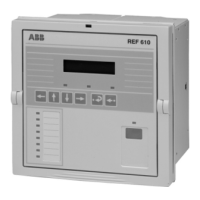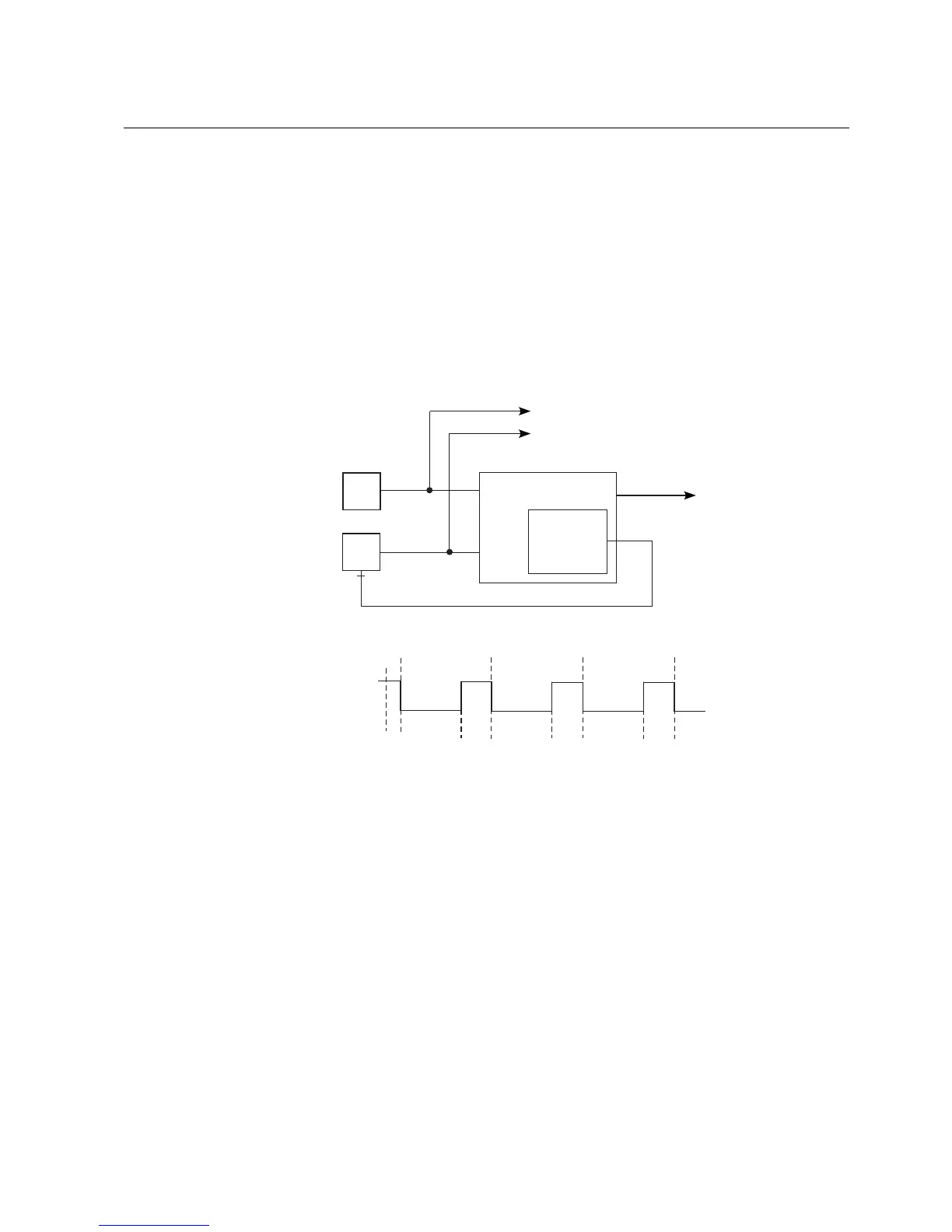153
6. Application examples
6.1. Auto-reclose function
6.1.1. Fast tripping and initiation of shot 1 using two protection stages
In several applications, such as fuse-saving applications involving down-stream
fuses, tripping and initiation of shot 1 should be fast (instantaneous or short-time
delayed) and of shot 2 and 3, and definite tripping time delayed. In this example,
two overcurrent stages are used, I> and I>>. Stage I>> is given an instantaneous
characteristic and Stage I> a time delay. By setting SG2/2 to 1 and SG2/7 to 1, Stage
I>> will be blocked by the AR function during shot 2 and 3.
I>>
I>
SG2/2=1
SG2/7=1
0→1
t>> t>
t>
t>
Trip
Trip
Block I>>
Close CB
CB closed
CB open
Shot 1
Shot 2 Shot 3
Definite Trip
I>> Trip
I> Trip
Block I>> at
Shot 1, 2 and 3
Block I>>
I> Trip
Block I>>
I> Trip
Block I>>
Open CB
Open CB
A040360
Fig. 6.1.1.-1 Fast initiation of shot 1 using one fast and one delayed stage
In case of a short-circuit in the network, stage I>> will trip the circuit breaker and
initiate shot 1. At the time of shot initiation, the blocking of stage I>> will be
activated. If the network fault is not cleared, stage I> will trip the circuit breaker and
continue the auto-reclose sequence to shot 2, shot 3 and finally definite tripping.
As the set start value of stage I> in this example is higher than that of stage I>>, as
sometimes is the case, it is possible that the current will not exceed the set start value
of stage I> while the blocking of stage I>> is active. This will lead to a pumping
effect when the AR function is reset (the blocking of stage I>> included), i.e. the AR
sequence will start over and over again.
To avoid such a pumping effect, a cutout time is used. The cutout time, like the
reclaim time, will start when the set dead time elapses and the AR function issues a
reclosing command to the circuit breaker. By setting the cutout time to be shorter
Feeder Protection Relay
Technical Reference Manual
REF 610REF 610
1MRS755310

